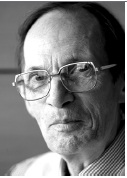I suppose it is fact that all over Asia — taking the whole vast expanse running from the Indian subcontinent up to here — there is one outstanding center of the performing and visual arts. And that’s Tokyo.
Yet there’s so much we’re not aware of going on here.
The other day I got a call to come over to a tiny, new museum just opened in my very own neighborhood — across the road, but a place I didn’t even know existed. I guess there must be new institutions coming on stream all the time about which most of us know little.
For me that certainly included the Musee Tomo, a tasteful addition to the arts scene here — imagine a space such as the renowned Idemitsu Museum in Marunouchi, but devoted purely to modern ceramic items, selected by one expert collector, and each piece most beautifully lit.
How do you get there? I’d better explain. If you are coming by subway, the best way is to take the Hibiya Line and get off at Kamiyacho. Alternatively, if you are starting from the Okura, it’s a short walk. You go down the hill between the main building of the hotel and the Annex — that steep little hill leading towards Kamiyacho — and you take the narrowish road on the left.
At the moment there’s a big construction site there. Immediately after that, on the right-hand side, is the entrance to the museum. There’s a sign-board.
I found the traffic a bit disturbing in that narrow little street at the back of the Okura but, once you’ve got off the public highway, you are safe and sound in a quiet compound, with a space to park half a dozen cars.
Take a glance, as you go, ’round the compound. Straight ahead there is a rare early 20th century western-style building, apparently quite empty — and owned by the Kikuchi family. Then over on the left, there’s this low-slung entrance, a bit dark and sepulchral, to a totally modern building, with a shaft or narrow tower.
That quiet tower, I am told, is where the legendary “Mme. Kikuchi” has her office. She is Tomo Kikuchi, to give the lady her full name, and she is in her early 80s. I met her there one day, and also met her daughter.
On a second day I was given a one-man press preview by an American, Richard Molinaroli. He has helped Kikuchi-san — she has gathered together one of the premier collections of modern ceramics in private hands anywhere in Japan — to mount the current exhibition, and has worked with her on and off for 20 years.
Richard took me down into the exhibition space — everything is underground — on a quiet Saturday morning. He showed me the details of the staircase and explained how the lighting had been decided by a team of experts. He pointed to a glass banister rail that runs down the stairs there.
“It was made by hand,” he showed me. “Section by section, each is slightly different, as you can see.”
It’s a touch I might have missed. That rail curves elegantly down the stairs, with a touch of the rococo.
For details of the exhibition — all the 100 or more unique pieces on show are by the late Yoshimichi Fujimoto, a modern master — see my Web site description, to be reached as follows.
Go to www.economist.com, the Web site of The Economist, then click on “Cities Guide,” and then, when you see the map of the world, click on Tokyo and head for “Catch if you can.”
There’s a link there to the museum’s Web site, with all the additional info necessary, as to opening times. The current show, I might mention, centers on a chef d’oeuvre dubbed by Kikuchi-san as a “phantom dinner set” of 230 pieces, made in honor of the late Showa Emperor. Look also for earlier pieces dating to the early 1970s — works with wild bird motifs. While you visit The Economist site, please take note of our lede item there, a notice of the current exhibition at the Mori Art Museum titled “Modern Means: Continuity and Change in Art, 1880 to the Present.” With this exhibition, the MAM has hit its stride, I would say, and has emerged as a hand-maiden in Asia to the renowned MOMA of New York.
I am terribly happy for Minoru and Yoshiko Mori, the founders of the MAM, and for David Elliott, the director, and his staff. Now is a time to consider the huge amount of work that went into setting up the MAM, starting back in 1996, when the tie with MOMA was first established.
The MAM is showing some 290 pieces that will all go back to New York after the exhibition finishes on Aug. 1. Try to get there before that August closing date. We live in chaotic times, and modern art flies all over the coop.
One needs a little structure, a little something to put everything in its place, if for a fleeting moment, and that is how this exhibition works, with a first section dubbed “Primal” (1880-1920), then “Reductive” (1920-1950), next “Commonplace” (1950-1970), and finally “Mutable” (1970 to the present day).
All the great names are there, starting with Claude Monet and Gauguin and moving on via Picasso and Miro to recent works by Chinese and Korean video artists and so much more.
It’s up on the 53rd floor of the Mori Tower.









